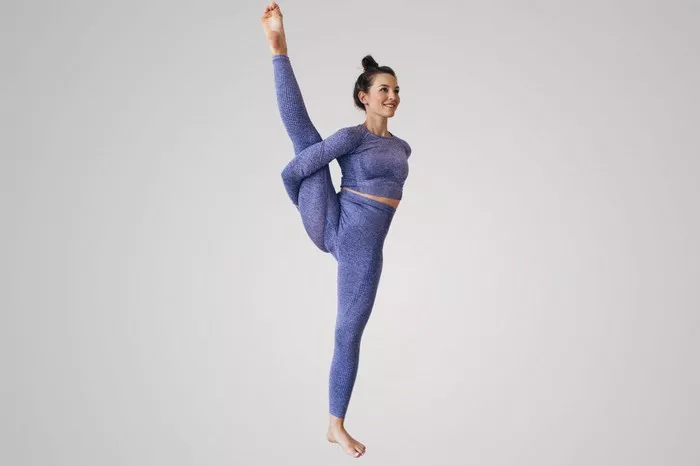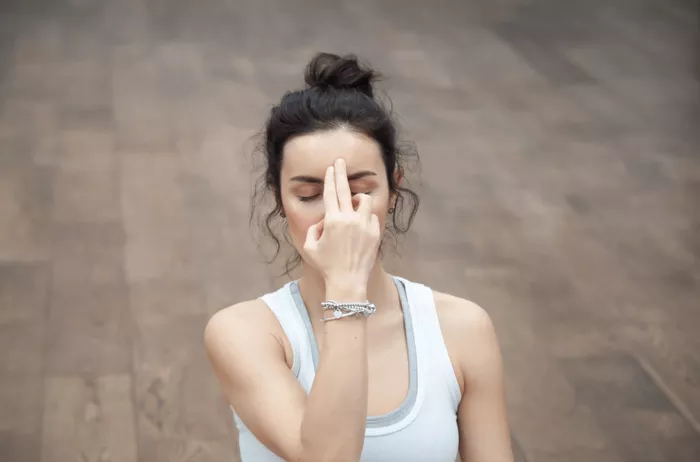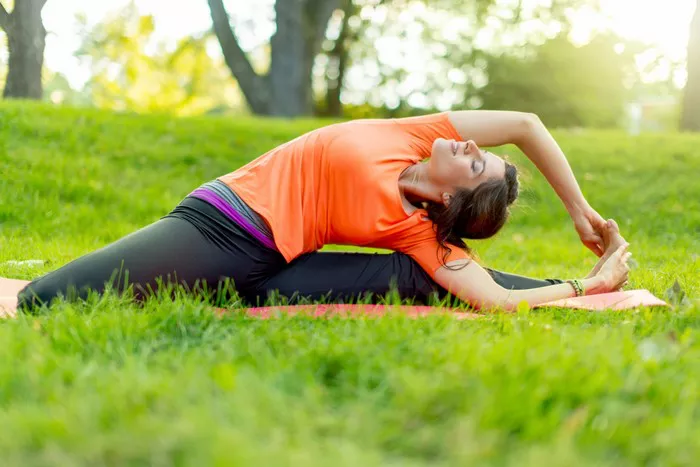Stress and anxiety are common experiences in our modern lives, often linked to the demands of work, personal relationships, and the constant rush of daily activities. In such a fast-paced environment, it’s crucial to find ways to manage and alleviate the toll stress takes on our bodies and minds. While there are many approaches to reducing stress and anxiety, yoga offers a holistic and gentle practice that can significantly improve mental and emotional well-being.
In this article, we will explore the most effective yoga poses for relieving stress and anxiety. You will learn how yoga not only helps calm the mind but also strengthens the body, improves flexibility, and enhances overall mood. Whether you’re a beginner or an experienced practitioner, this guide provides accessible poses and explains how they help release tension and promote relaxation.
The Connection Between Stress, Anxiety, and the Body
Before diving into specific yoga poses, it’s important to understand how stress and anxiety manifest physically. The body reacts to stress by activating the sympathetic nervous system, commonly known as the fight-or-flight response. This response triggers the release of stress hormones like cortisol, which can lead to physical symptoms such as tight muscles, shallow breathing, and elevated heart rate.
When stress persists, it can contribute to anxiety disorders, where individuals experience feelings of unease, nervousness, and constant worry. Anxiety can also cause physical symptoms, including chest tightness, headaches, and digestive problems.
Yoga works by engaging the parasympathetic nervous system, the counterpart to the sympathetic nervous system, which helps the body relax and recover from stress. Through mindful breathing, movement, and meditation, yoga fosters a sense of calm, encourages relaxation, and aids in emotional regulation.
How Yoga Helps with Stress and Anxiety Relief
Yoga can be a powerful tool for managing stress and anxiety. Regular practice offers a number of benefits:
Reduction in physical tension: Yoga poses stretch and release tight muscles, helping to reduce the physical symptoms of stress.
Activation of the parasympathetic nervous system: Deep breathing and slow movements activate the body’s relaxation response, slowing down the heart rate and lowering blood pressure.
Mindfulness and focus: Yoga encourages mindfulness, which helps shift attention away from anxious thoughts and brings awareness to the present moment.
Improved sleep: Regular yoga practice can improve sleep quality, which is often disrupted by stress and anxiety.
Enhanced mood and mental clarity: Yoga promotes the release of endorphins, the body’s natural mood elevators, helping to reduce feelings of anxiety and depression.
Now that we understand how yoga supports mental well-being, let’s explore the specific poses that can help alleviate stress and anxiety.
Best Yoga Poses for Stress and Anxiety
1. Child’s Pose (Balasana)
Child’s Pose is a restorative and grounding posture that encourages deep relaxation. This pose is particularly effective for calming the nervous system and releasing tension in the back, neck, and shoulders—areas often tight from stress.
How to Do It:
Start by kneeling on the floor, sitting on your heels.
Lower your torso forward, bringing your forehead to the mat.
Extend your arms in front of you or place them by your sides for a more passive version.
Focus on your breath, inhaling deeply and exhaling slowly to release tension.
Benefits:
Calms the mind and reduces stress.
Gently stretches the hips, knees, and back.
Encourages deep breathing, activating the parasympathetic nervous system.
2. Standing Forward Fold (Uttanasana)
Forward folds help release tension in the hamstrings, lower back, and neck, making them perfect for those experiencing physical stress. The Uttanasana pose also encourages deep breathing, which is essential for managing anxiety.
How to Do It:
Stand with your feet hip-width apart and bend forward at the hips, letting your head and neck relax toward the ground.
Keep a slight bend in your knees if you have tight hamstrings.
Place your hands on the floor or on your shins, depending on your flexibility.
Benefits:
Relieves tension in the back and neck.
Reduces mental fatigue by calming the mind.
Encourages deep and mindful breathing, which lowers stress levels.
3. Cat-Cow Pose (Marjaryasana-Bitilasana)
The Cat-Cow flow is a dynamic movement sequence that helps release tension from the spine while promoting flexibility and deep breathing. The movement between arching and rounding the back helps to synchronize breath with movement, which is calming and grounding.
How to Do It:
Start on all fours with your wrists under your shoulders and knees under your hips.
On an inhale, arch your back and lift your head and tailbone toward the ceiling (Cow Pose).
On an exhale, round your spine, tucking your chin to your chest and drawing your belly button toward your spine (Cat Pose).
Repeat the flow for several rounds.
Benefits:
Relieves tension in the spine and neck.
Improves posture and body awareness.
Calms the nervous system through the connection of breath and movement.
4. Legs Up the Wall (Viparita Karani)
This simple restorative pose is excellent for reducing anxiety and calming the body. It allows the nervous system to shift into a state of relaxation by increasing circulation and decreasing stress levels. It also provides relief for tired legs and feet.
How to Do It:
Sit next to a wall and lie down on your back.
Swing your legs up the wall, keeping them straight and your arms by your sides.
Relax and breathe deeply, staying in the pose for 5-15 minutes.
Benefits:
Calms the mind and promotes deep relaxation.
Improves circulation and reduces fatigue.
Helps alleviate headaches and stress-related tension.
5. Bridge Pose (Setu Bandhasana)
Bridge Pose is a gentle backbend that opens the chest, shoulders, and hips while strengthening the back and legs. It is effective for relieving tension in the body and boosting mood by stimulating the release of endorphins.
How to Do It:
Lie on your back with your knees bent and feet flat on the floor, hip-width apart.
Press your feet into the mat as you lift your hips toward the ceiling.
Clasp your hands under your back and press your arms into the floor.
Stay in the pose for several breaths, then slowly lower down.
Benefits:
Opens the chest and heart area, promoting emotional release.
Strengthens the back and legs.
Calms the mind and reduces anxiety through deep breathing.
6. Seated Forward Fold (Paschimottanasana)
The Seated Forward Fold is a deep stretch for the hamstrings and lower back. It encourages introspection and promotes deep relaxation, making it ideal for unwinding after a long, stressful day.
How to Do It:
Sit on the floor with your legs extended in front of you.
Inhale and lengthen your spine, then exhale and fold forward over your legs, reaching for your feet or shins.
Keep your back straight as you fold to avoid straining your lower back.
Hold the position for several breaths.
Benefits:
Relieves tension in the back and legs.
Encourages a calming, introspective focus.
Helps to ease mental stress by promoting deep breathing.
7. Corpse Pose (Savasana)
Savasana is typically the final pose in a yoga practice, but it is also one of the most powerful for calming the mind and relieving stress. It allows the body to integrate the benefits of the practice and enter a deep state of relaxation.
How to Do It:
Lie on your back with your legs extended and your arms by your sides, palms facing upward.
Close your eyes and focus on your breath.
Let your body relax completely, allowing any tension to melt away.
Stay in the pose for 5-15 minutes, focusing on relaxation.
Benefits:
Relieves physical and mental tension.
Calms the nervous system and promotes emotional stability.
Enhances mindfulness and deep relaxation.
8. Alternate Nostril Breathing (Nadi Shodhana)
Breathing exercises are a cornerstone of yoga practice, and alternate nostril breathing is particularly effective for reducing stress and anxiety. This technique calms the mind, balances energy, and helps you regain focus.
How to Do It:
Sit comfortably with your spine straight.
Close your right nostril with your thumb and inhale deeply through your left nostril.
Close the left nostril with your ring finger, release the right nostril, and exhale through the right nostril.
Inhale deeply through the right nostril, close it, and exhale through the left.
Continue alternating nostrils for several rounds of breath.
Benefits:
Calms the mind and reduces stress.
Improves focus and concentration.
Balances the flow of energy in the body.
See Also: Can Yoga Poses in Bed Help You Sleep Better?
Conclusion
Yoga offers a range of poses and techniques that can help reduce stress and anxiety by fostering a sense of relaxation, mindfulness, and emotional balance. By incorporating these yoga poses into your daily or weekly routine, you can experience significant relief from the mental and physical symptoms of stress.
Whether you’re practicing Child’s Pose to relax after a busy day, using Bridge Pose to release tension, or engaging in mindful breathing exercises, each pose brings you one step closer to achieving a calm, peaceful mind and a balanced body. Regular yoga practice can be an empowering tool in managing stress and anxiety, helping you navigate life with greater ease and emotional resilience.
Remember, the key to reaping the full benefits of yoga is consistency. Set aside time each day or week for yoga, and be patient with yourself as you allow the practice to gently ease you into a more relaxed and centered state of being.
You Might Be Interested In:























